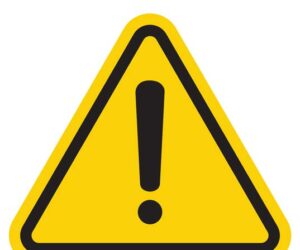Control Beer Color: Tips from the Pros
Brewer: Keith Wayne
Brewery: Tahoe Mountain Brewing Co., Stateline, Nev.
Years of experience: 41/2 years
Education: BS in fermentation science and completion of Master Brewer’s Program, University of California, Davis; Member of Institute of Brewing, London
House Beers: Sand Harbor Honey Blond, Freel Peak Wheat, Cave Rock Pale Ale, Snowflower Red, Mt. Tallac Oatmeal Stout
The color of beer is controlled 90 to 95 percent by malt. If you’ve tasted a Michelob Dark, you might have noticed that it doesn’t taste like a dark (beer) but it looks like one. That has to do with separating color from flavor. That beer has caramel color in it. You can also do that with black malt, which is designed to add color but not astringent flavors associated with black beer.
So the best way to color beer without affecting flavor too much is to use black malt. Use it in flour form and put it in the kettle instead of the mash tun. Use 0.08 pounds per barrel (31 gallons) to give beer about 14° Lovibond. In homebrew terms that would be 0.21 ounces per five-gallon batch. It’s an additive. In other words you add the 14° Lovibond to that of your original grain bill to give you the total Lovibond.
An example of how we affect color would be adjusting our barleywine using black malt. We didn’t want it over-caramelized, but we wanted it dark. Originally I didn’t have enough caramel in there to have a dark beer. If you add chocolate malt or roasted barley, you get flavor reminiscent of stout or porter, which you don’t want. So I put 1 percent black malt into the grist. It’s dark now. I also add sugar to the kettle, which gives it more browning. And I put in two kinds of crystal malt to give it a nice sweet flavor.
Another example is our stout. It’s as black as it gets. We simply use chocolate malt and roasted barley to make 10 percent of the total grist.
When adjusting color, you need to look at percentages. Rather than determining how many degrees Lovibond your beer can vary from batch to batch, look at the percent. Our red is about 40° Lovibond. If we brewed one batch that went to 50° Lovibond, that would be within an acceptable range. We also have a blond, which is at about 6° Lovibond, an appropriate level for that beer. If you increased it five degrees to 11° Lovibond, it wouldn’t look right. However, five degrees for the red is a much lower percent and would be okay. Five percent variance is within an acceptable range for Lovibond.
Other factors that affect color to a much lesser degree are pH, oxygen, filtering, and boiling. Boiling obviously darkens the wort mainly due to one chemical reaction called Maillard. You have reducting sugars — maltose and glucose — and you have amino acids, which come mostly from the malt and a small amount from the hops. When you get the sugar and amino acids into solution and heat them, they react. The result of the reaction is melanoidin formation, which is the same thing you get from lying out in the sun. This ends up as caramelization. The hotter the wort is, the more caramelization you get. So if you’re using a burner, such as propane if you are a homebrewer, you’re going to get more color than if you steam. We use steam here.
Decoction mashing can affect color as well. When you boil one-third of the malt, you destroy enzymes but you form color. So if you do a double or triple decoction, you get a fair amount of color in the portions that you boil and add back to the mash.
The pH of water is another factor affecting color. The lower the pH, the less it favors caramelization. When the pH goes up (the water gets more alkaline), you get better darker beers. The effect of pH is a chemical reaction, not an enzyme-driven reaction. There is a slight decrease in the amount of amino acids at the end of the boil. The amino acids that are lost have been turned into color. Burton-on-Trent water, originally used to make pale ale, is more acidic due to the high permanent hardness. Munich water is fairly alkaline, which gives you good darker beers.
Oxygen is another factor. When you pull wort from the boil and inject oxygen into it, the oxygen combines with the sugars and you get darkening.
Filtering affects color, but a lot of the change comes from the removal of haze. A pale ale or a red might have an orange tinge. When you filter, that goes away. If you run it through a centrifuge to de-sludge it, then through DE (diatomaceous earth) to filter it, then through a finer filter, say a plate and frame, you get color loss, too, but not much at all.



